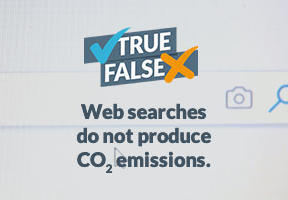The Consequences of Climate Change
10 min read
poses a huge threat to the environment and to society. The poorest, least carbon-intensive regions will be the hardest hit. Humankind needs to start preparing now if it is to adapt to this new environment. The has prepared an overview of the risks and initial measures to respond to them in section two of its Fifth Assessment Report.

© AFP PHOTO - PAUL ELLIS - According to the U.K. MET Office's Chief Scientist, "there is potentially a role" for climate change in the massive flooding in England in December 2015.
There are two main findings in the IPCC report:
- The consequences of climate change will be unevenly distributed, varying across regions and over time depending on a number of factors. While the international community has set the target of limiting the global temperature increase to 2°C above preindustrial levels by the end of the century, there is no single approach for reducing risks that is appropriate across all settings.
- Tropical and subtropical countries, which already suffer from lack of access to water, low agricultural productivity and poorly managed urban areas, will be more heavily impacted than industrialized economies. In all countries, the risks will generally be greater for disadvantaged communities, which are already socially, economically and culturally marginalized. This could lead to the appearance of a second layer of inequality among the people of the world.
The IPCC has identified several risk categories that can be attributed more or less directly to climate change and have been the subject of a number of studies. These include:
Sea level rise. Rising sea levels are indisputably the result of . Sea levels have been rising since the late 19th century – slowly at first (20 centimeters over the 20th century), then picking up pace as time went on. Sea levels rose three centimeters between 1993 and 2003, and could rise by as much as 82 centimeters on average by the end of the century. A third of this rise can be attributed to thermal expansion as the ocean water warms up. The remaining two thirds are due to melting land ice, particularly Arctic and Antarctic glaciers and ice caps, excluding sea ice. When added to storms and coastal flooding, this phenomenon poses a threat to Arctic peoples, often highly concentrated communities living around estuaries, and inhabitants of small islands.
Marine and coastal ecosystems. While global warming has an impact on all ecosystems, its consequences are particularly pronounced on marine and coastal ecosystems, where ocean acidification from increased CO2 absorption also comes into play. As acidification adversely affects coral reefs and the calcification process of many organisms, it potentially poses a threat to the entire food chain. The migration of species to higher latitudes could also have the notable side effect of reducing fisheries catch potential in abandoned areas.
Extreme weather events. The relationship between global warming and extreme weather events, which can be attributed to a number of causes, is not as direct as other consequences. But there is a statistical trend toward higher incidences of these events in some regions. According to data collected by the United Nations Environment Programme (UNEP), for example, occurrences of forest fires, extreme temperatures, droughts, landslides, storms and flooding increased by a factor of 3.6 between 1970 and 2007 in Latin America and the Caribbean. In Europe, waves were responsible for nearly 78,000 deaths in the ten years from 1998 to 2009, a number that far exceeds those caused by earthquakes (19,000) and industrial accidents (169).
Forests and other natural carbon sinks. The terrestrial biosphere, which includes peatlands, permafrost (permanently frozen soil) and forest, forms a natural carbon sink. However, as droughts damage forests and warmer temperatures melt high-altitude permafrost, this carbon may be released into the atmosphere.
Water resources. While water resources are projected to increase at high latitudes, renewable surface water and groundwater resources will likely decrease in most dry subtropical regions. At the same time, water quality is expected to decline. Here technology may offer solutions. California, for example, has launched a large-scale program to desalinate water from the Pacific Ocean in response to its historic drought.
Food. Climate change has already negatively impacted wheat and corn yields. The same is true for rice and soy crops, albeit to a lesser extent. Even the quality of the crops may be affected, with a 10% to 14% decrease in the protein content of the grain coupled with an increased likelihood of parasite infestation. Furthermore, global studies have recorded several periods of rapid increases in food and grain prices following extreme weather events in the past. If this were to take place again in the future, the effect on prices would be further compounded by rising global demand. According to the Food and Agriculture Organization of the United Nations (FAO), food production will have to increase by 70% to feed the world's population of some 10 billion people in 2050. The key to achieving this target will be adaptation measures such as improved crop yields.
Large urban populations. Many of the risks of climate change, such as heat stress, extreme precipitation, air pollution and water scarcity, are concentrated in urban areas. These risks are amplified for people lacking basic infrastructure like , water and health services, or living in poor-quality housing. Urban management systems will therefore be called on to play a key role in counterbalancing the effects of global warming. By 2050, the number of people living in cities is expected to have surged from 3.4 billion today, or half of the global population, to 6.3 billion, with particularly high concentrations in Asia and Africa.
Energy. The lack of water could have a severe impact on hydropower generation. Recent droughts in Brazil, the country's worst in 50 years, led to blackouts and an increase in energy prices. This impact on generation shows how climate change could affect countries that depend heavily on hydropower.
Global security. The fastest way to adapt to climate change is often to migrate to richer, more temperate regions, which has led some to predict a rise in "climate refugees" and ethnic conflict.
In terms of human health, climate change is likely to exacerbate existing problems. And regarding , while only a few recent species extinctions have been attributed to global warming, natural changes in temperature over the past millions of years are known to have always caused significant species extinctions.





















